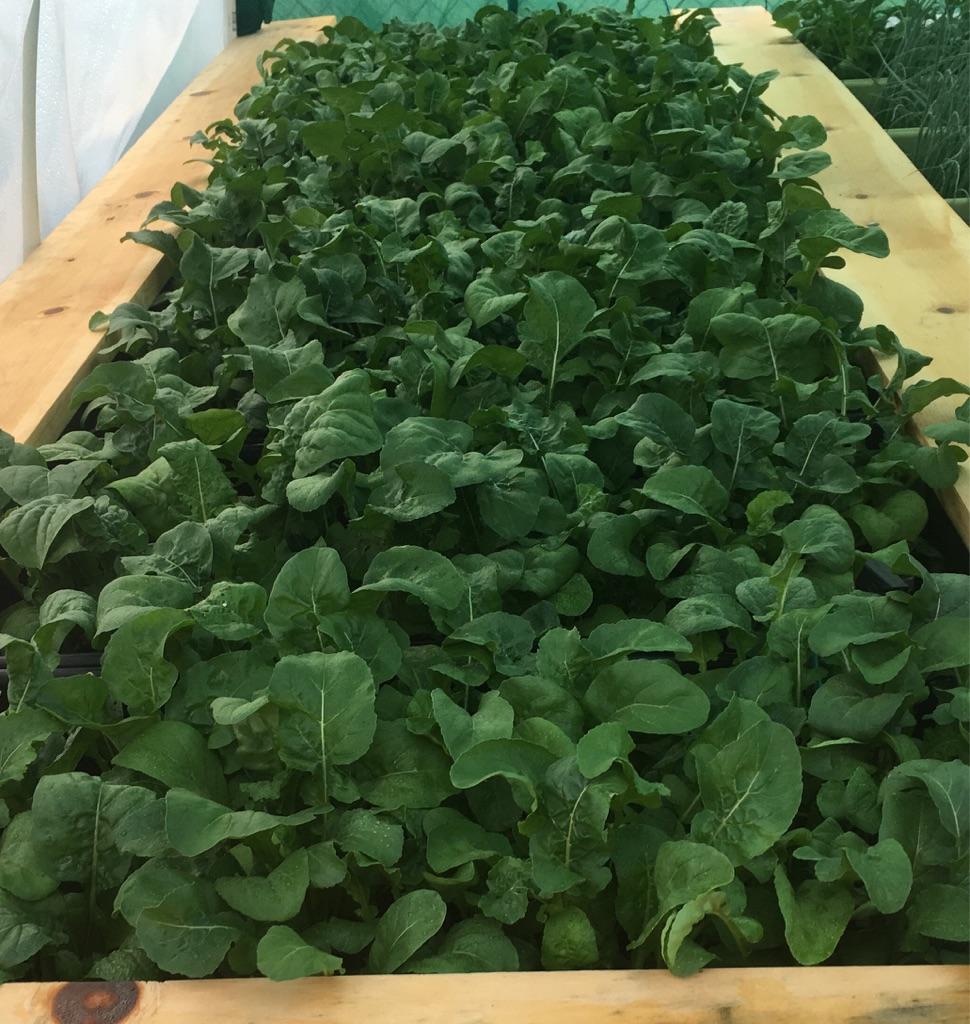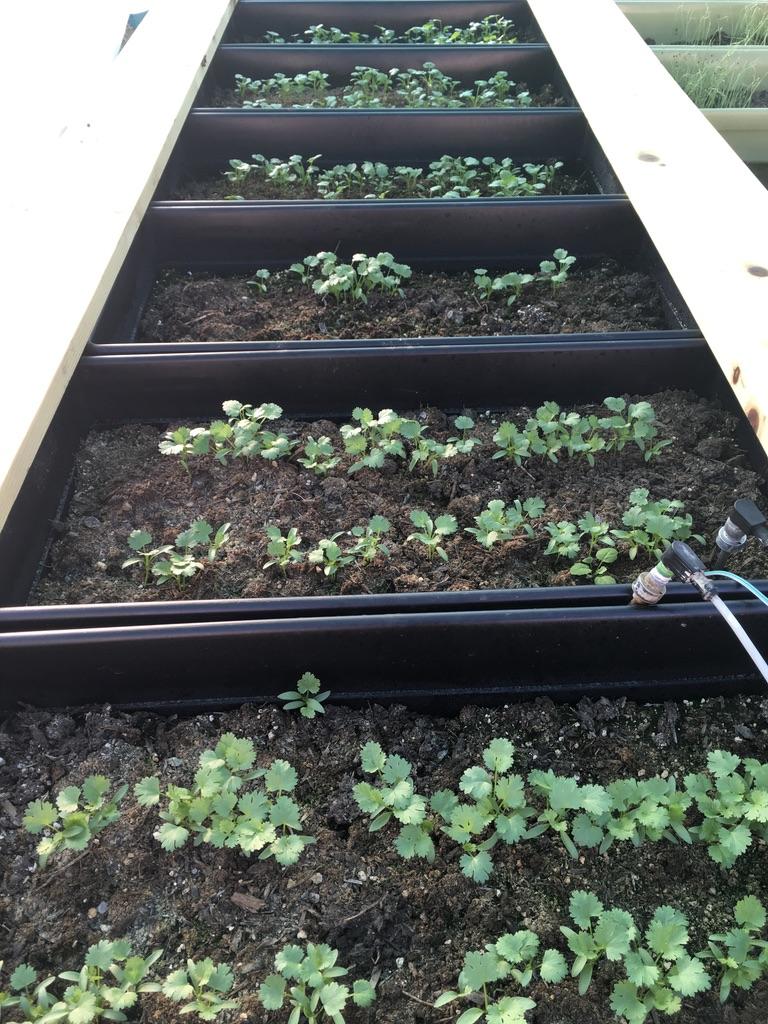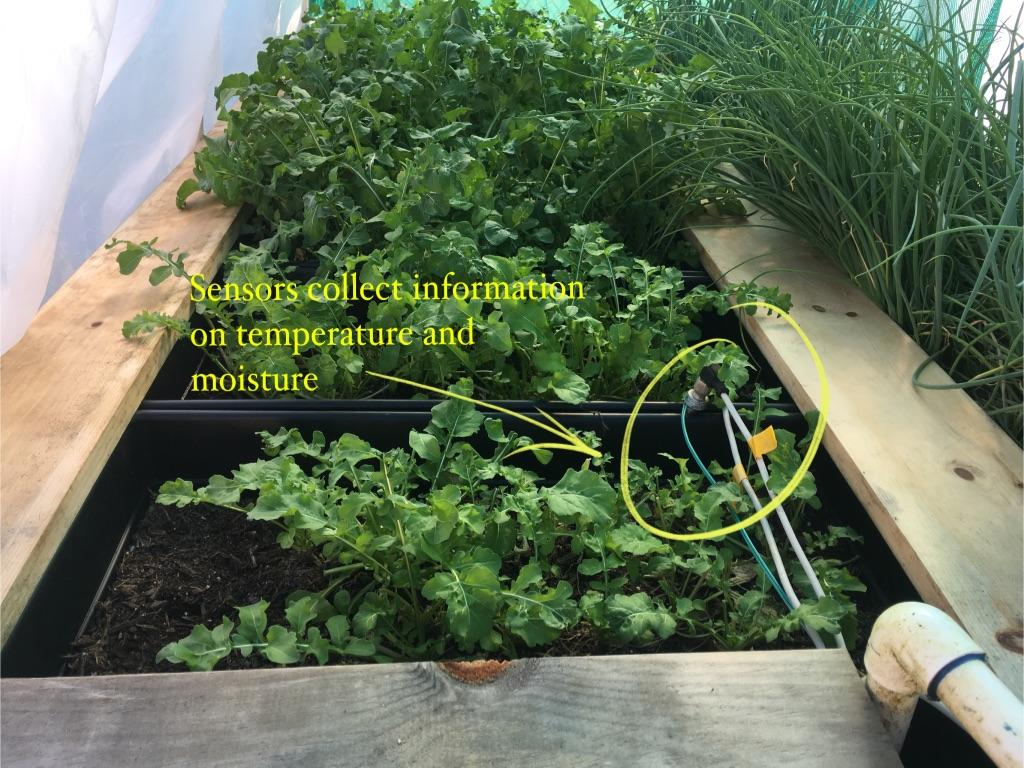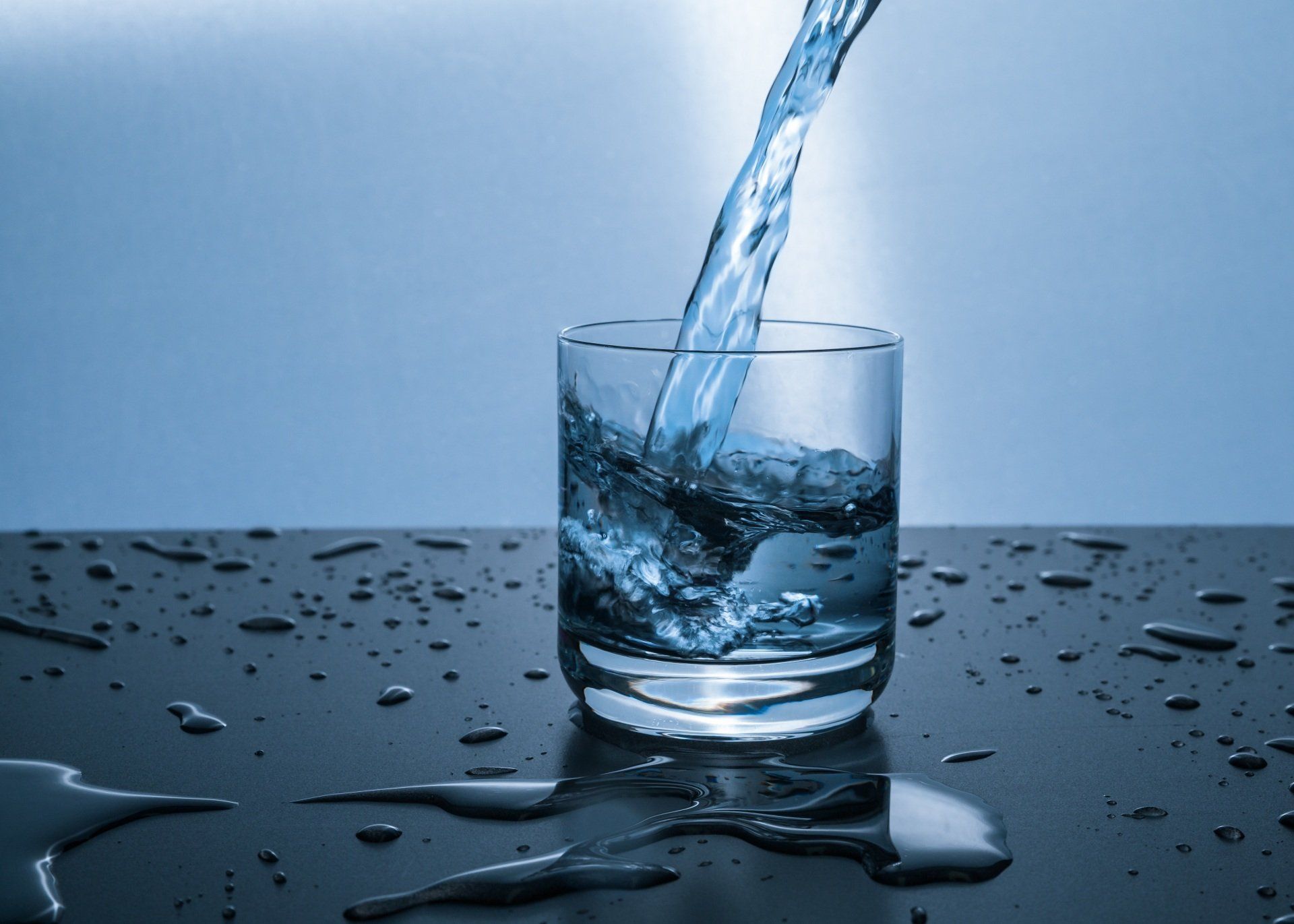MultiGen / DewPonics™
The DewPonics™ System coupled with MultiGen can simply “grow where others cannot”.
Leading the way in providing a solution to the world’s growing water demands
WES and DewPoint Systems (DPS) have been strategic business partners for more than 3 years. Our partnership goal is to provide universal secure access to unlimited amounts of freshwater for drinking (human and livestock) and food crop irrigation in regions that are experiencing drought and climate change affecting natural resources. WES’s Multigen line of products that utilizes waste heat energy from power generators can produce a cold working fluid to drive DPS agriculture technology. Additionally, WES’s efficient Sal Still water distillation panel product extends freshwater access to those having no power generation system makes them ideal for remote installations.
WES and DPS combination of clean energy systems can provide new long term economic opportunities and health benefits for these regions. WES has been a GREAT company to work with and they are leading the way in providing one solution to the world’s growing water demands.
Richard J Bailey Jr, Founder/President, DewPoint System LLC

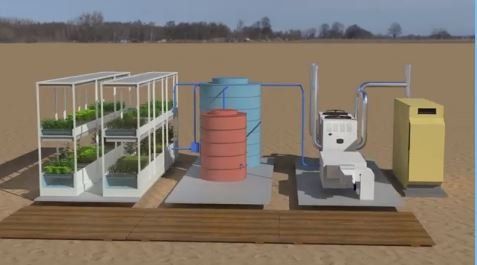
The WES MultiGen system when combined with DEWPOINT SYSTEMS, DewPonics™, is a unique use of the Water produced by MultiGen. This is thus a modular Agriculture System with technology that accelerates and controls the growth of plants by chilling the plant roots in warm humid climates.
This system gives the plants the elusion that its “Spring Season” during which time many temperate plants experience accelerated growth. In Tropical climates a DewPonics™ system can grow temperate seasonal crops year round in regions that often are compelled to import these crops.
The chilled soils in the planters, use the water from the AWM to cool the roots. The need for supplemental irrigation is greatly reduced because the chilled soil reduces evaporation loss. So the amount of water required in some cases by the DewPonics™ systems is about <5% of what is typically needed by other cultivation methods.
The DewPonics™ system requires no access to freshwater sources. The growth system is complimented by the MultiGen system by supplying the ability to cool the roots with water made from the AWG by transferring the temperature only to the roots; this water in turn can be used as water for other uses.
Over 100 Temperate plant species have been grown at the Natural Energy Laboratory of Hawaii (NELHA) using the root chilling technology. This technology was first developed by the use of Cold Deep ocean water available to NELHA. This technology has now been combined with the WES system of MultiGen AWG and made the entire system portable.
Water and Food:
The WES/ DewPonics™ containerized food and Water manufacturer systems can provide fresh healthy vegetables and usable water to those local populations that currently import them at high costs or have no access to fresh or seawater resources for agriculture or Drinking water shortages. This unique system is a portable stand alone package providing accelerated growth of plants and water production in remote or confined areas. Both technologies are well proven. Noted is the water manufactured is used by extracting and transferring the cool temperature of that water to the root system and not the water itself.
Overview:
The WES/DewPonics™ container system creates a controlled Springtime growing condition. This is done 24/7/365 via the computer Supervisory Control and Data Acquisition (SCADA) program, an advanced LED lighting system and chilled water from the WES MultiGen chillers and Air Water maker. The SCADA system precisely controls the planting medium temperature by regulating WES MultiGen chilled water flow rate through the DewPonics™ growing system. The combination of the cool root zone and the warm leaf zone, mimics the seasonal Springtime’s temperate latitude environmental conditions where plants exhibit natural rapid growth. This allows temperate plants to be grown outside their preferred growing zones with accelerated rates and continuous crop production. Additionally, planting medium that is below the dew point temperature, will condense water vapor onto it, providing self-irrigation; this eliminates evaporation loss and reduces plant’s heat stress. Additional irrigation if needed, can be provided from the water stored in tanks generated from the WES Air Water Generator.
Dewpoint Systems LLC (Hawaii) patented DewPonics™ plant technology has been demonstrated at the State of Hawaii, Natural Energy Laboratory of Hawaii Authority (NELHA, http://nelha.hawaii.gov) over the past 6 years with the latest R&D refinements of securing water and food production 24/7/365 into containerized systems. The combination of the WES/DewPonics™ growth container is designed to significantly improve growth rates of plants with the addition of SCADA and advanced LED lighting systems. The WES/DewPonics™ containerized systems are built to withstand severe storm conditions such as typhoons and are coated with a ceramic paint developed by NASA to enhanced climate control. Adjustable racks accommodate a number of planting tiers for a variety of plant heights. Each plant tier can be a separately controlled growth parameter and plant crop type which allows for staggered and mix crop production in one DewPonics™ growth unit.
Production rates can vary from extremely high-density production for mix baby greens with multiple cut-harvests per single planting to growing larger greens at lower planting densities (see list table below).
History:
The founder of NELHA, Dr. John P. Craven (former Chief Scientist of the US Navy) with Dr. Jack Davidson and Richard Bailey (DewPoint Systems LLC Hawaii, Founder) worked on patenting the discovery of creating a temperature differential between a plant’s root and leaf zones, by utilizing cold ocean water flowing through pipes in the ground, to chill the root zone. This discovery was made at NELHA by Dr. Craven while noticing plants growing along pipes flowing with cold deep ocean water which had condensation on them. Dr. Craven later went on to grow strawberries on the cold pipes at NELHA which proved to grow fast and sweet in a tropical arid humid climate. DewPoint Systems LLC (Hawaii) has moved the pioneering technology forward beyond cold ocean water chilled pipes to a more precise root zone temperature controlling method that greatly improves root growth, nutrient uptake and by greatly reducing harvesting and planting costs.
The Dew-point System’s redesign using the MultiGen has improved economics to diversify to portability by using the MultiGen root chilling method replacing the cold ocean water; this unique Water from the Atmosphere MultiGen system thus provides the cool temperature water previously found at 1800 feet off Hawaii.
Patents:
DewPonics™ is a US registered trademark and is PCT patent pending.
The MultiGen us an Australian registered Patent and Various USA licenses on components parts.
| Common Name / (Latin) | Ave. Days to germinate | Ave. Days to baby green harvest | Ave. Days to full size harvest | # cropping from single planting (MICRO GREENS) | Plants per 1 DewPonics Vessel (319 in2) | #plants/m2 (0.20 m2 = 319 in2) Density |
|---|---|---|---|---|---|---|
| Salad Greens | ||||||
| Arugula (Eruca sativa) | 5 | 20 | 40 | 3 | 30 | 150 |
| green mustard (Brassica rapa) | 5 to 10 | 20 | 40 | 3 | 50 | 250 |
| pac choi (Brassica Rapavar) | 5 to 10 | 20 | 60 | 1 | 10 | 50 |
| red mustard (Brassica juncea) | 5 to 10 | 20 | 40 | 3 | 50 | 250 |
| Mizuna | 7 | 20 | 40 | 3 | 50 | 250 |
| Fennel (Foeniculum vulgare) | 15 | 50 | 70 | 0 | 20 | 100 |
| Kale (Brassica oleracea) | 10 | 30 | 50 | 3 | 30 | 150 |
| Variety Lettuce (Lactuca sativa) | 7 | 35 | 55 | 0 | 25 | 125 |
| Onion Yellow (Allum cepa) | 7 | 0 | 100 | 1 | 30 | 150 |
| Green Onion Walla walla var. (Allium fistulosum) | 7 | 0 | 60-120 | 1 | 100 | 500 |
| Shallots (Allium cepa var. aggregtum) | 7 | 0 | 110 | 1 | 80 | 400 |
| Spinach var. (Spinacia oleracae) | 7 | 26 | 30-45 | 3 | 50 | 250 |
| Swiss Chard (Beta Vulgaris) | 7 | 32 | 2 | 50 | 250 | |
| Cilantro (Corlandrum sativum) | 5 to 7 | 10 | 55 | 4 | 100 | 250 |
| Radish (Raphanus sativus) | 5 to 7 | 10 | 35 | 4 | 100 | 500 |
| Turnips (Brassica rapa) | 35 | 45 | 1 | 80 | 400 | |
| Carrots (Daucus carota) | 0 | 70-90 | 1 | 50 | 250 | |
| Beets Baby reds | 6 | 0 | 40 | 1 | 50 | 250 |
| Kohlrabi (Brassica oleracea Var. gongylodes) | 7 | 0 | 50 | 1 | 40 | 200 |
Resources
Rich Bailey slide presentation to the World Bank:
https://esmap.org/sites/esmap.org/files/DPS%20World%20Bank_June%2013%20%202016_web%20o.pdf
Rich Bailey interview with Food GPS: https://foodgps.com/nelha-national-energy-laboratory-of-hawaii-authority/
Founder of the State of Hawaii, NELHA and co-patent holder with Rich Bailey on deep ocean water cold root zone agriculture
Dr. John Pina Craven background:
https://fromdc2iowa.blogspot.com/2015/02/john-pina-craven-american-treasure.html
Dr. John Pina Craven article on cold agriculture:
Dr. John Pina Craven talking about deep ocean water and chilling roots of plants: https://youtu.be/U2OddCiG0_M
US Dept. of Energy website on the State of Hawaii, Natural Energy Laboratory of Hawaii Authority (NELHA):
https://www.energy.gov/sites/prod/files/2014/05/f15/tap_webinar_20080213.pdf
Wired Magazine: https://www.wired.com/2005/06/craven/
Cold root zone agriculture for New Mexico: http://www.scizerinm.org/coldproject.html
Tahiti deep ocean water air conditioning: https://youtu.be/6LmmlUxYTCc
TAHITI island resort development:
https://www.forbes.com/sites/lauriewerner/2014/09/15/touring-marlon-brandos-island/#5cbb60b32ec4
Cooling root zone verification studies:

